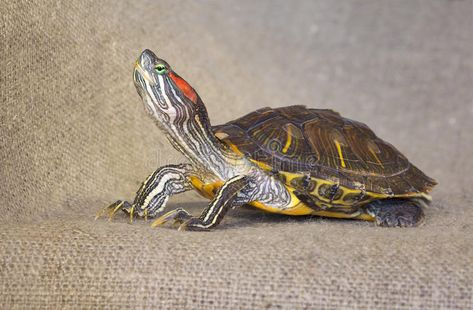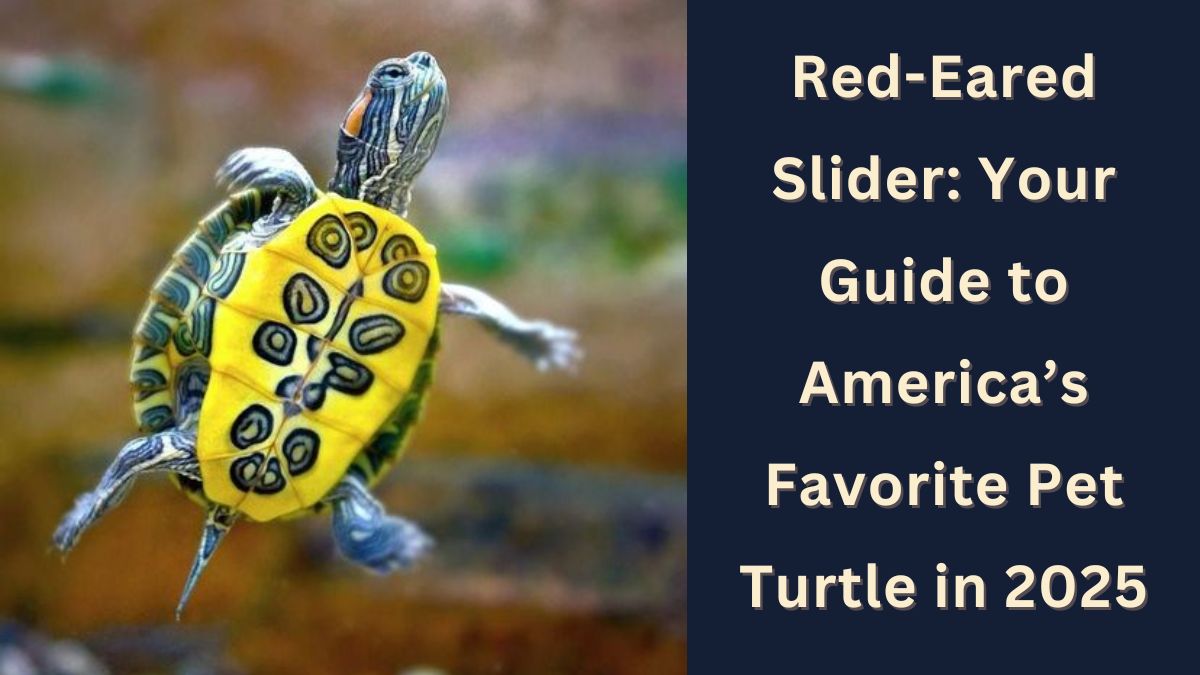Regarding pet turtles, the Red-Eared Slider brand is rather well-known in the US. Popular pet fad in 2025 are red-eared sliders due of their adaptability and striking red stripes behind their ears.
Regardless of your degree of experience as a reptile owner, this article will address all you need to know about caring for a Red-Eared Slider from tank setup to lifespan and beyond.
What Is a Red-Eared Slider?
Originally from southern and central United States, the semi-aquatic turtle Red-Eared Slider (Trachemys scripta elegans) Their vibrant red patterns and olive-green shells help one to recognize them even more easily. Turtle aficionados are resorting to “Red-Eared Slider pet” and “Red-Eared Slider for sale” searches for increasing numbers in the USA.
Why Red-Eared Sliders Are So Popular
Reasonably priced: Baby Red-Eared Sliders may run around $20 to $30.
Hardy: They fit really well in captivity with the proper care.
Personality: These turtles adore sunning and swimming, hence they are quite fun to watch.
Pet stores all throughout the nation have red-eared sliders on hand.
Searching for “best pet turtle” on Google, USA’s pet owners are often discovering this species.
Red-Eared Slider Care: The Essentials
Owning a Red-Eared Slider is not difficult, but it does require some knowledge. Their care needs are separated here based on popular themes:

Tank Setup
A Red-Eared Slider needs a large tank; project 10 gallons of water for every inch of shell length. Adults should have a 40–75 gallon tank including a dry basking space and filtered, dechlorinated water mixed together. “Red-Eared Slider tank setup” is a common search term as owners look for the perfect residence.
Lighting and Temperature
For basking and UVB light for calcium metabolism, Red-Eared Sliders would find a heat lamp (85–90°F) suitable. In absence of these, they can have shell issues. A common phrase in 2025 care recommendations is “Red-Eared Slider lighting”.
Diet
For your Red-Eared Slider, a good diet should include commercial turtle pellets, leafy greens (like kale or romaine), and sometimes protein (such small fish or worms). Steer clear of overfeeding; restrict feeding adults to every other day. One often asked question is “What do Red-Eared Sliders eat”?
Water Quality
Red-eared sliders spend most of their life in the water, hence weekly water changes and a strong filter are absolutely necessary. People search for “Red-Eared Slider care tips” since infections could arise from contaminated water.
How Big Do Red-Eared Sliders Get?
Red-eared sliders depend on size. Men usually reach 8 to 10 inches while women can grow to be 10 to 12 inches. This expansion calls for a bigger tank acquired ahead of time. As owners are ready, the topic of “Red-Eared Slider size” becomes somewhat prevalent.
Red-Eared Slider Lifespan
One often asked search question is “Red-Eared Slider lifespan.” Given the proper care, these turtles can live 20 to 30 years—sometimes even longer. Owning a Red-Eared Slider thus calls a great dedication, but it also benefits committed owners.
Why Red-Eared Sliders Are Trending in 2025
From YouTube tips on Red-Eared Slider tank building to TikHub videos of them sunbathing, these turtles are everywhere. Given their low noise level, minimal mess, and laid-back attitude—especially when more people live at home—red-eared sliders are the perfect pet for modern American lives.
Final Thoughts
A Red-Eared Slider can be your shelled friend for many years with right treatment. Their great looks, long lifetime, and laid-back attitude help them to lead front stage in pet trends. Ready to bring a Red-Eared Slider home? Visit a reliable breeder or local pet store to start your journey into turtle ownership!
FAQ’s
Is a red-eared slider a good pet?
Red-eared sliders can make great pets if cared for properly. Unfortunately, they sometimes do poorly in captivity because they are not given the correct diet, may not have the proper UV light, or do not have a filtration system for their tank.
What is the enemy of the red-eared slider?
The main predator of the red-eared slider is the human. They are quite vulnerable to humans due to their high abundance in ponds and wetlands. Other predators include; raccoons, otters, fish, frogs, snakes, skunks and birds
Do red-eared sliders sleep?
Red-eared sliders are excellent swimmers. At night they sleep underwater, usually resting on the bottom or floating on the surface, using their inflated throat as a flotation aid. Diet: These turtles are omnivorous – eating a variety of aquatic plants, insects, snails, fish, carrion and other small aquatic prey

